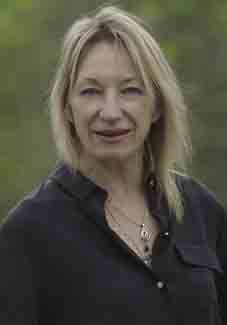
Peg LeVine
The first-ever Center Fellow at USC Shoah Foundation Center for Advanced Genocide Research returned “home” this month to conduct more interviews and work on indexing Cambodian testimonies.
As the 2014-15 fellow, LeVine spent the spring 2015 semester in residence at the USC Shoah Foundation Center for Advanced Genocide Research conducting research and participating in Center activities, and gave a public talk during her stay.
She also presented at the 2014 USC Shoah Foundation international conference “Memory, Media and Technology: Exploring the Trajectories of Schindler’s List.”
LeVine is Associate Professor adjunct at the University of Melbourne School of Global and Population Health. Her research focuses on the “ritual violence” experienced by Cambodians during the Cambodian genocide under the Khmer Rouge regime from 1975-1979. She coined the term “ritualcide” in her book Love and Dread in Cambodia to describe the Khmer Rouge’s disruption of the spiritual and ancestral rituals that offer protection in Cambodian life and traditions, particularly courtships, weddings and births. She has found traumatic dread to be associated strongly with loss of access to ritual infrastructure and mediators for spirit protection. Her research is the most comprehensive ethnographic study on Khmer Rouge weddings.
Since her fellowship at USC Shoah Foundation, LeVine is pleased to report that she achieved a major goal: publishing the term “ritualcide” on Wikipedia.
During her return to the Institute this month, which LeVine said felt like coming home since she enjoys being here so much, LeVine worked Visual History Archive curator Crispin Brooks to define a new indexing term for the archive: “dreams.” Previously, testimonies could only be indexed with “nightmares” or “aspirations.” Dreams are often an integral part of genocide survivors' experiences globally, including the Holocaust.
LeVine has also been working with USC Shoah Foundation consultant Ita Gordon to find Holocaust testimonies in the Visual History Archive that discuss mysticism, atheism, the preservation of rituals, and art.
In the past few weeks, LeVine has been analyzing the two testimonials she took during her original fellowship of two Cambodian Genocide survivors who are now living in Long Beach, Calif.: a mother and daughter. Given that the mother was an adult during Democratic Kampuchea, LeVine said that her interview was especially fascinating. She is from an older generation that is not only rapidly declining, but also not always represented in Cambodian oral history collections. LeVine was particularly interested in the differences in spiritual practices and rituals between the two generations.
“The mother’s testimony was so profound. There’s new history in there,” LeVine said.
LeVine’s goal is to continue working with the Long Beach Cambodian refugee community and recording more interviews, especially with older people and also elder monks who were de-robed under the Khmer Rouge but later re-robed themselves. She’ll also focus on survivors of the Holocaust as well as Cambodian Genocide who are artists, and explore how their art changed before, during and after the conflict.
Through her work with the Cambodian community, LeVine hopes to increase the cultural reliability of Cambodian Genocide oral history collections and make them more representative of the entire community and its unique spirit-based practices and ritual ceremonies.